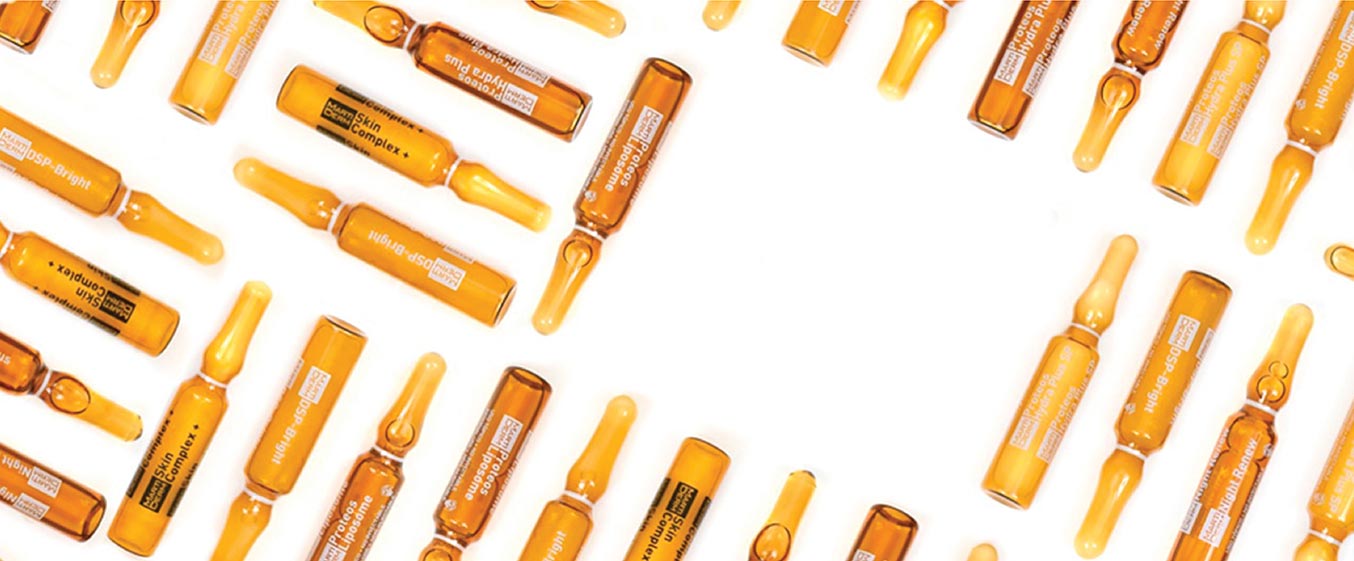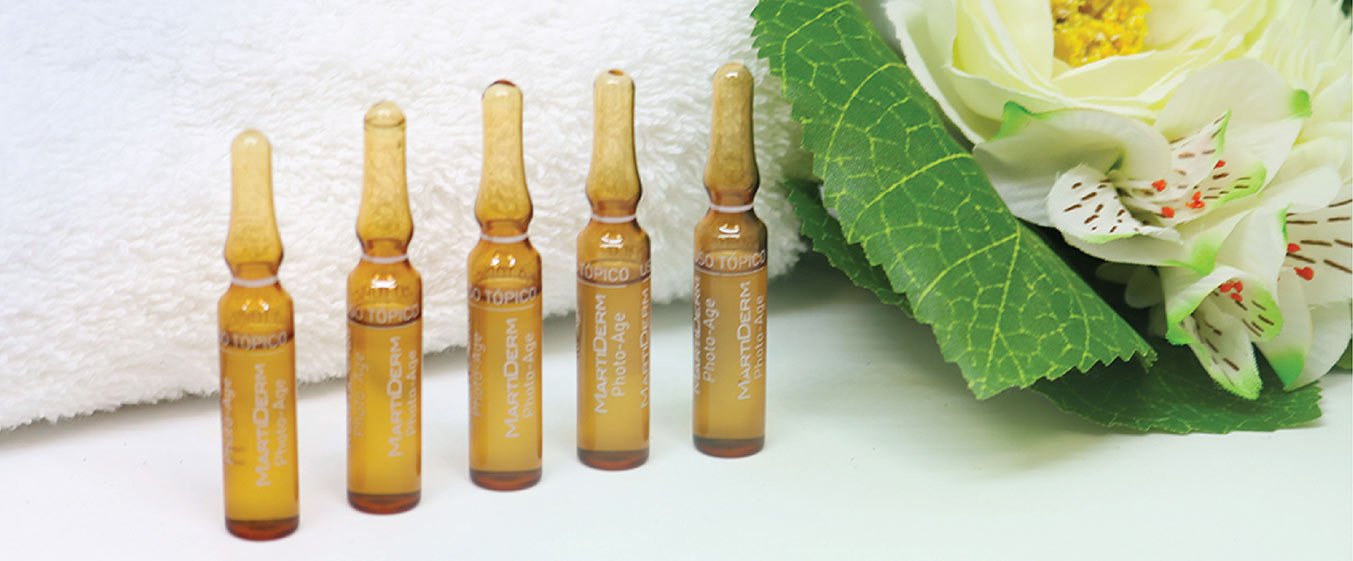Acne - a simple problem that is faced by most people at some point in their lives. Some of us are lucky enough to outgrow it post-teenage years, whereas some of us are constantly battling it even as adults. While the management of acne may seem like a herculean task, understanding its underlying causes is absolutely essential. This not only helps to combat this dire problem but helps to control and prevent it from forming in the first place!
What causes acne?
The skin is covered with thousands of tiny holes or pores that are connected to the glands underneath. The hair follicles connect these glands to the pores and secrete a sticky liquid called sebum. The sebum naturally lubricates the skin and keeps it soft. However, sometimes a few problems may occur in the midst of this lubrication process, such as:
- The accumulation of dead skin cells, dirt or grime
- The buildup of excess bacteria in the pores
- The production of excess oil by the hair follicles
These lead to blocked pores and the development of a chronic, inflammatory skin condition called ‘acne’.
Moreover, there are certain trigger factors, both intentional and unintentional play a role too.
- A poor, imbalanced diet that is high in greasy foods or refined carbohydrates, causes inflammation throughout the body
- Using comedogenic skincare, haircare or makeup products that can obstruct the pores
- The menstrual cycle which causes the progesterone levels to drop, and estrogen levels to rise, which triggers the sebaceous glands and makes them produce more sebum, eventually clogging up the pores.
- A change in hormone levels due to puberty, pregnancy, medical conditions like PolyCystic Ovarian Syndrome (PCOD)
- A family history of acne
- Emotional trauma, anxiety or stress
- The side effects of certain medications or birth control pills
What are the different types of acne?
Acne or pimples vary in nature - they are found in different sizes, colours and levels of pain, which can be categorised as:
1. Blackheads: These are open comedones (or clogged pores) that have a partial opening on the skin’s surface where dead skin cells or oil may accumulate. The opening exposes the skin’s melanin to oxygen and makes them turn black.
2. Whiteheads: These are closed comedones that get filled with sebum or dead skin cells and do not have an opening on the surface of the skin. Since the plugged materials do not come in contact with oxygen, they remain white or yellow in colour and have minimal inflammation.
3. Papules: These are the most frequent types of pimples, that are caused by bacteria assembling under the skin’s surface. This results in inflammation and clogged pores, and formation of small, tender and pink bumps on the skin’s surface.
4. Pustules: These pimples are red at the base and are infected with pus on the top, giving them a white, yellow like colour. They are clearly visible on the surface of the skin.
5. Nodules: These are large, solid and hardened lumps that are deeply embedded in the skin. They are often painful and felt before they are seen.
6. Cysts: These are even deeper in the skin than nodules are, and are swollen and filled with pus, causing pain, itchiness and scarring.

What are ingredients to look for in acne products/for the management of acne-prone skin?
Certain ingredients are acne superstars and power-packed with goodness and nutrients for the skin. Read more on how incorporating these acne-fighters can be the solution to the everlasting problem of acne.
1. Alpha Hydroxy Acids: AHAs are known to exfoliate the skin and slough off dead cells that congest the pores and cause breakouts. Since they have the ability to dissolve in water, they help in improving the skin's overall texture, making it softer, smoother and firmer without causing irritations. Popular AHAs include Glycolic Acid and Lactic Acid that helps to reduce inflammation and swelling. They are very gentle in nature and can be used by those having sensitive skin as well.
2. Beta Hydroxy Acids: BHAs on the other hand are oil-soluble, which allows them to penetrate deeper into the skin. They can do wonders to unclog pores and control oil levels, as well as work on the skin's overall texture. These anti-acne heroes exfoliate both the skin's top layer and go all the way into the skin's sebaceous glands in the pores to clear out whiteheads and blackheads. The most commonly used BHA is Salicylic Acid, followed by Citric Acid.
3. Benzoyl Peroxide: This is a super effective and popular over-the-counter ingredient that helps in not only the treatment of acne but also the prevention of it. It destroys harmful acne-causing bacteria, and accelerates the process of skin replacement while slowing down the production of sebum. It also exfoliates dead cells and is usually found in acne-fighting cleansers, gels, lotions, and spot treatments.
4. Azelaic Acid: Naturally occurring in grains such as Barley, Wheat and Rye, it has both antimicrobial and anti-inflammatory properties, making it an effective treatment for acne as well as rosacea. It eliminates bacteria and prevents future breakouts too. It reduces inflammation, speeds up cell turnover, and allows the skin to heal faster as it minimizes scarring. It is commonly available in the form of a gel, foam and cream.
5. Vitamin C: This glow getter is a powerhouse antioxidant that protects and shields the skin from environmental aggressors like sun damage, pollution, etc that can cause acne. Moreover, It helps even out the skin's tone and gives it a healthy and radiant glow from within. Using a stable form of Vitamin C, or L-Ascorbic Acid can do wonders to diminish dark spots and pigmentation too!
6. Niacinamide: It is a form of the essential nutrient Vitamin B-3, that can be used to treat not just acne, but eczema and hyperpigmentation too. It can reduce the appearance of pustules and papules as it minimises inflammation, redness and blotchiness and prevents the oil-producing glands from going into overdrive. It keeps the skin smooth and moisturised and naturally reduces the size of our pores over time. In addition, it protects the skin from oxidative stress and sun damage too. Most topical treatments come in the form of a serum, but some cleansers, creams and masks contain it too.
7. Vitamin A: Also known as 'Retinol' in over the counter products, and 'Retinoids' in prescription form - it is an important ingredient to activate the skin cells' recuperative abilities. It is an antioxidant that prevents free radical damage, increases cell growth to heal acne lesions and scars as it decreases the production of oil in the skin. When using it topically, always start by applying a little, and gradually increase the dose to allow your skin to get used to it and prevent any reactions.
8. Green Tea: No, not the cup of Green Tea you drink every morning! Green Tea or Green Tea extract contains a substance called Catechin, which is a plant-based compound (polyphenol) that provides antioxidant, antibiotic and anti-inflammatory benefits. Since it is rich in a polyphenol called EGCG, it can improve lesions, irritations and any redness caused by acne. Androgens are hormones that the body produces naturally, and when their levels fluctuate or rise, the sebaceous glands get stimulated and produce more sebum that obstructs the pores and inhibits the growth of bacteria. EGCG helps to break this cycle.
9. Clay: Apart from being used in pottery, it is a great calming ingredient for the skin owing to its anti-inflammatory benefits. It helps soothe the skin by absorbing surplus oil and drawing out impurities. Even when the skin is covered with pimples, it can be very beneficial since it is rich in minerals and essential acids and feeds nutrients into the skin. It is a holy-grail ingredient for face masks as it detoxifies, rejuvenates and clarifies skin complexion.
10. Tea Tree Oil: Having both antibacterial and anti-inflammatory properties, it is a natural blemish-fighter. It helps to combat microbes and disinfects the skin to deeply cleanse and purify from within. As it kills harmful bacteria, it can be used as a spot treatment too. (Disclaimer: always dilute it with a carrier oil and never use it by itself!). It is found in serums, cleansers, face packs and even lotions.
11. Charcoal: Charcoal has been a staple in skincare rituals since years together, as it not only acts as a magnet that pulls out bacteria, dirt and impurities but also unclogs the pores and makes them smaller. Moreover, it absorbs unwanted oil, deeply cleanses and provides gentle exfoliation. It can clarify the skin, smoothen it and manage acne. A great natural detoxifier - it is often used in cleansers, masks, and scrubs.

What are simple habits to follow on a daily basis to avoid acne from forming?
Changing certain daily habits and making a few lifestyle choices can go a long way in the management and treatment of acne.
Check labels: Be conscious and always look for skincare and cosmetic products that are labelled as 'non-comedogenic' as they won't block the pores.
Wear a Mineral-based Sunscreen: Wear SPF 365 days of the year, in spite of what the weather may be like, to protect the skin from both UVA and UVB rays and prevent excess sebum production and dark spots.
Always remove makeup: Never go to bed wearing makeup as it may clog the pores, and not allow the skin to breathe.
Cleanse twice a day: Ensure you wash your face using a mild cleanser and with gentle motions. You can try cleansing cloths or towelettes too.
Avoid scrubbing too hard: Exfoliation is necessary to slough off dead skin cells. However, always be gentle to avoid stripping your skin off its necessary oils.
Never pick or squeeze a pimple: This has the risk of causing redness, scars, swelling as well as an infection.
Regularly clean what touches your skin: The face is constantly in contact with our phones, pillow covers, etc so make sure that they are well-cleaned and free of dirt and grime.
Refrain from touching the face: Through the day, avoid constantly touching your face or pimples with dirty hands.
Clean your glasses: If you wear spectacles, regularly clean them as sebum and skin residue can gather on them.
Keep your hair clean: Greasy hair products or dandruff could cause acne, so ensure that your scalp is always healthy and squeaky clean!
Use a facial mist: Keep your skin fresh and clean, and spray this on your face a few times in the day.
Moisturise regularly: Never skip out on a moisturiser; instead opt for an oil-free, water-based or mattifying moisturiser to keep the skin hydrated from within.
Acne fighting skin routine:
Here is a simple skincare regime using effective acne-fighting products to combat those stubborn breakouts and refresh, revitalise and clarify the skin!
The Bottom Line
Acne can be a tricky issue to get rid of. However, diligently following a skincare regime that is packed with the goodness of acne-treating ingredients can go a long way. Find what products work for you, and consistency apply them to see a visible difference! Switch to a balanced diet, a healthier lifestyle, stress a little less, and hydrate yourself regularly to see your skin getting clearer in no time!
- By Krisha Jhaveri



